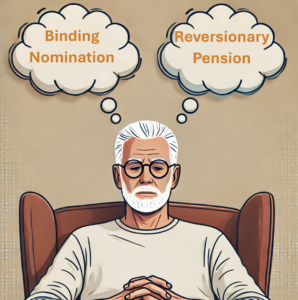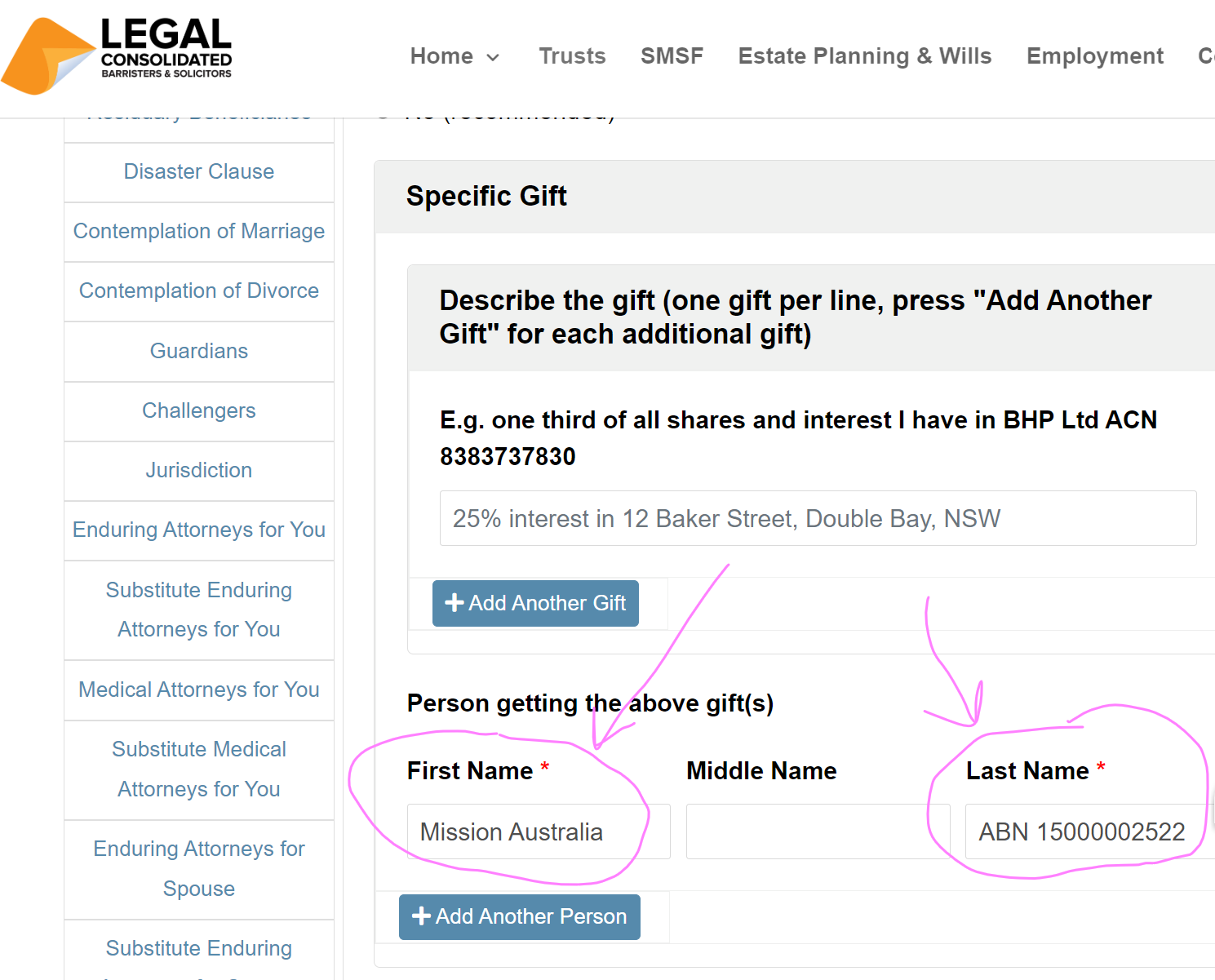How does a Reversionary Pension work with a Binding Nomination?
When managing your superannuation for the benefit of your heirs, especially involving vulnerable beneficiaries, combining Reversionary Pensions, Binding Nominations, and the strategic use of a Superannuation Testamentary Trust can optimise tax outcomes and ensure continuity of support.
This article examines the relationship between a Reversionary Pension, Binding Nominations, Superannuation Testamentary Trusts and the 32% tax on your superannuation when you die. This article considers how the Reversionary Pension and Superannuation Testamentary Trust work together.
Who can have a Reversionary Pension?
Only a small number of Australians can set up a Reversionary pension. These are old people, people with young children or people with vulnerable children. Most people can not have a Reversionary Pension.
Am I lucky enough to have a Reversionary Pension?
There is nothing ‘lucky’ about it. The people that are allowed to have a Revsioanry Pension are unlucky:
- they are old; or
- die with young children; or
- have a disabled or vulnerable child
On top of that, you have to die before your Reversionary Pension can be acted upon!
However, the Reversionary Pension does allow your superannuation to stay in superannuation at your death. So that is usually a good thing.
When I die why does my superannuation have to leave this wonderful low-tax environment?
Your superannuation is for your retirement. When you die it is no longer needed. At your death, your superannuation must leave the protection of this low-tax environment. There is no exception, except a Reversionary Pension.
What does a Reversionary Pension allow you to do?
If you are old or have young or disabled children then you may be able to set up a Reversionary Pension. (You must do this before you die.) If the Reversionary Pension works (many are faulty) then instead of your death benefit being forced out of superannuation it can stay in the superannuation environment. This is for the benefit of your remaining spouse, young or disabled child. But once they die or get too old then at some point the superannuation must be paid out.
Is a Reversionary Pension a good idea?
While Legal Consolidated is one of the largest sellers of Reversionary Pension kits in Australia, only financial planners can advise on whether you should have a Reversionary Pension. A reversionary pension is valuable. It is a pension that continues to be seamlessly paid to your dependant after you die.
They are terrific if you want to keep your superannuation in the low-taxing superannuation environment after you die. The tax-free status of the SMSF’s income and capital gains concerning pension assets continues uninterrupted.
Does a Revsionsary Pension allow my superannuation to stay in superannuation forever?
Well, not forever – but for longer than your death. Eventually, your spouse or disabled child dies. Or, your children get too old. At that point, the party is over. Your Reversionary Pension has played itself out. It has finished. At that point, your superannuation is finished. It must be paid out.
It had to happen one day. Eventually, your superannuation has to be paid out. It was good while it lasted. But it is over.
What happens if I die without a Reversionary Pension?
Without a Reversionary Pension, you are back to the default position. This is at your death, your superannuation must leave its protective environment.
Why gets my superannuation when I die?
At death (without a Reversionary Pension) your superannuation goes to a ‘dependant’ or into your Will? They are the only two options.
Why does Legal Consolidated recommend that my super go into my Will?
At death, your superannuation suffers a tax rate of up to 32%. So, up to nearly one-third of your super may end up with the ATO when you die. If you have a 3-GenerationTestamentary Trust Will then you can often reduce such death taxes down to zero. But you have to get your superannuation into your Will for the Superannuation Testamentary Trust in your Will to work.
How do guarantee my super goes into my Will?
If you have a Self-Managed Super fund then build this document.
If you do not have a Self-Managed Superannuation Fund then speak to the super fund. We do not give advice on this, but generally, you sign a Binding Death Benefit Nomination (BDBN) with only these three words: “Legal Personal Repreenetaative’. But do not give advice on non Legal Consolidated Superannuation Funds. Speak with your superannuation fund they know their trust deed and what is required – we do not.
I am going to say if for the third time: Legal Consolidated does not give advice on how you work with your superannuation fund on getting your superannuation in your Will. As the drafter of your Will, that is not our job. That is the job of you and your superannuation fund.
Which is more powerful Reversionary Pension or Binding Nomination?
Normally the Revsionary Pension happens first. This is before the Binding Nomination. This is the case for Legal Consolidated SMSF Deeds. However, you need to talk with your superannuation company if you do not have an SMSF Deed.
Are Reversionary Pensions more delicate than Binding Nominations?
Compatibility of Reversionary Pensions and Binding Nominations for a Vulnerable Child
Setting up both a Reversionary Pension and a Non-lapsing Binding Death Benefit Nomination (BDBN) for your vulnerable child might seem redundant, but they can complement each other:
- Clarifying Intentions: Ensure that both documents are consistent in their directives, nominating the same beneficiary to avoid any potential legal confusion or contradiction after your death.
- Sequential Benefits: The Reversionary Pension ensures that pension payments continue seamlessly upon death, which maintains a steady income stream. The BDBN can then direct any remaining lump sum amounts or additional super benefits according to the specifics of your estate plan.
Does a Reversionary Pension avoid the 32% non-dependency death tax?
This is obviously yes. The 32% tax is payable when your superannuation leaves the superannuation environment. The Reversionary Pension keeps it in superannuation – a little bit longer. Since it is currently remaining in the Superannuation environment by definition no non-dependency death tax is payable. But one day the Reversionary Pension will finish. If you have a 3-Generation Testamentary Trust Will then you are protected.
Protects from death duties, divorcing and bankrupt children and a 32% tax on super. Build online with free lifetime updates:
Couples Bundle
includes 3-Generation Testamentary Trust Wills and 4 POAs
Singles Bundle
includes 3-Generation Testamentary Trust Will and 2 POAs
Death Taxes
- Australia’s four death duties
- 32% tax on superannuation to children
- Selling a dead person’s home tax-free
- HECs debt at death
- CGT on dead wife’s wedding ring
- Extra tax on Charities
Vulnerable children and spend-thrifts
- Your Will includes:
- Divorce Protection Trust if children divorce
- Bankruptcy Trusts
- Special Disability Trust (free vulnerable children in Wills Training Video)

- Guardians for under 18-year-old children
- Considered person clause to stop Will challenges
Second Marriages & Challenging Will
- Contractual Will Agreement for second marriages
- Wills for blended families
- Do Marriages and Divorce revoke my Will?
- Can my lover challenge my Will?
- Make my Will fair: hotchpot clauses v Equalisation?
What if I:
- have assets or beneficiaries overseas?

- lack mental capacity to sign my Will?
- sign my Will in hospital or isolating?
- lose my Will or my home burns down?
- have addresses changed in my Will?
- have nicknames and alias names?
- want free storage of my Wills and POAs?
- put Specific Gifts in Wills
- build my parent’s Wills?
- leave money to my pets?
- want my adviser or accountant to build the Will for me?
Assets not in your Will
- Joint tenancy assets and the family home
- Loans to children, parents or company
- Gifts and forgiving a debt before you die
- Who controls my Company at death?
- Family Trusts:
- Changing control with Backup Appointors
- losing Centrelink and winding up Family Trust
- Does my Family Trust go in my Will?
Power of Attorney
 Money POAs: NSW, VIC, QLD, WA, SA, TAS, ACT & NT
Money POAs: NSW, VIC, QLD, WA, SA, TAS, ACT & NT
- be used to steal my money?
- act as trustee of my trust?
- change my Superannuation binding nomination?
- be witnessed by my financial planner witness?
- be signed if I lack mental capacity?
- Medical, Lifestyle, Guardianships, and Care Directives:
- Company POA when directors go missing, insane or die
After death
- Free Wish List to be kept with your Will
- Burial arrangements
- How to amend a Testamentary Trust after you die
- What happens to mortgages when I die?
- Family Court looks at dead Dad’s Will

